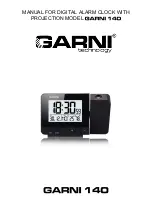
Once all the components are on the board, hook up the power. Give your work a careful check
to make sure that the orientation of the components is right. Especially check that the stripe on
C1 is facing the marking on the board.
Warning!
Be careful, we are dealing with high voltages now!
The voltage may be significantly higher than 170V at the moment, because the
high voltage generator is powerful and the output is not loaded. Once you add a
load, (by connecting the tubes), the voltage should oscillate around 170V –
190V, and might have a slight “sawtooth” appearance if you view it with an
oscilloscope.
Test Step
Apply power to the board again. Listen for any stressed sounding buzzing or
humming, and check that neither the 7805 nor the MOSFET get excessively hot.
Check that the power LED still lights.
Trouble
shooting
If you hear any angry sounding buzzing turn the power off immediately
and check the orientation of C1!
The circuit should run almost silently, with
only a very faint “crackling” sound.
If you can't reach the target voltage, turn off and check the polarity of your
components, especially C1. If you have an oscilloscope, you can check the
voltage at the gate of the MOSFET, and it should show pulses of high frequency
square wave: this is the driver waveform to the HV generator, which is being
turned off and on by the voltage detection, trying to achieve the target voltage
(180V default).
Warning!
Note also that the “Power” header also has high voltage exposed on
it!
This is for if you want to drive neons instead of LEDs for the colons. Be careful
handling the board, it is easy to touch the “Power” header by mistake. If you are
sure you won't be needing it, you can snap the extra pin off and populate only
the bottom 3 pins on the connector.
Test Step
Check the voltage at the 170V test point. You should read a voltage in excess of
170V.
You can also test using an old neon lamp if you have one. Temporarily connect
the neon lamp between the “GND” test point and the “170V” test point with an
appropriate ballast resistor (turn the power off first). Turn the power on and the
neon lamp should come on.
Trouble
shooting
Q1 can get warm,
but should not get too hot to touch
. If it gets hot, you
need to check the orientation of the components and that there are no solder
bridges.
If you don't get the expected voltage reading
:











































